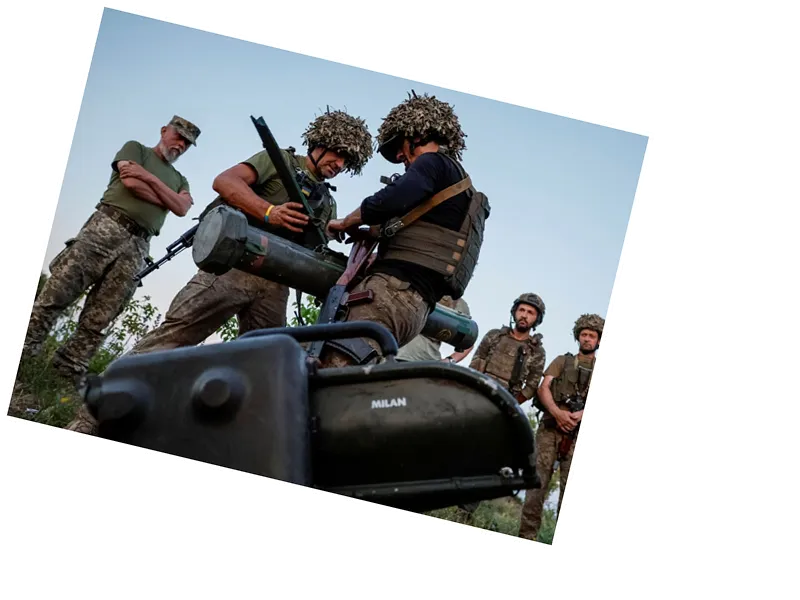Ukraine Escalates Attack on Russian Targets Using Western Weapons
Ukraine has taken a bold step in its defense strategy by utilizing Western-supplied weapons against Russian military targets. Recently, Chancellor Olaf Scholz voiced support for Ukraine's defense measures, allowing the country to employ Western arms against the aggressions stemming from Russian territory. This decision was largely interpreted as a response to intensified Russian attacks on Kharkiv, launched from the Russian border.
Amid the ongoing conflict, the city of Wolchansk has emerged as a focal point of intense fighting between Ukrainian and Russian forces. Ukrainian military has launched significant counterattacks in the northeast, with Ukrainian news outlet Ukrainska Pravda reporting that 70% of Wolchansk is now under Ukrainian control. The Ukrainian military, despite facing fierce resistance, has maintained a foothold in the city, keeping the Russian invaders at bay.
According to Lieutenant Colonel Nazar Voloshin, spokesman for the operational-strategic force 'Khortytsya,' Ukrainian defense forces are actively engaged in preventing the enemy from consolidating their positions. The strategic Volchya River remains a key battleground, with ongoing efforts to stop the enemy from crossing it.
The Institute for the Study of War (ISW) emphasized the critical importance of Western-supplied air defense systems in Ukraine’s strategy. These systems are deemed essential in countering Russian missile and glide bomb attacks. Recent footage and reports reveal extensive destruction in Wolchansk, highlighting the severe impact of continuous artillery shelling. A notable portion of the city lies in ruins, with satellite images indicating that 50-80% of the urban infrastructure is beyond repair.
Significant Western Support and Tactical Changes
On the broader tactical front, the USA, led by President Joe Biden’s directive, has approved the use of American weapons against Russian attacks. This includes high mobility artillery rocket systems (HIMARS) targeting Russian defense systems like the S-300/400 in Belgorod Oblast. According to White House national security spokesperson John Kirby, the use of US weapons remains restricted to defensive actions and does not include long-range missiles.
The decision marks a significant shift in the conflict dynamics, providing Ukraine with expanded capabilities to defend against deeper incursions from Russian territory. The relief was evident as Ukrainian forces successfully struck Russian military assets in Belgorod Oblast, confirmed by multiple sources and visual evidence on social media platforms.
Ukrainian President Volodymyr Zelensky expressed gratitude for the newfound support but maintained that the measures were still insufficient to halt the continuous bombing of the Kharkiv region. Zelensky’s administration continues to advocate for greater flexibility and range in using Western weaponry to effectively counter Russian air bombardments targeting Ukrainian urban centers.
- Drone footage and videos circulating on the Internet provide a stark visual of the catastrophic damage in Wolchansk. Multiple sources corroborate the scale of destruction, showing razed buildings and significant urban decay.
- Reports from various Ukrainian Telegram channels and independent analysts like Deep State highlight the heavy toll on both military and civilian infrastructures, emphasizing the need for continued foreign military support.
- Western Europe’s delayed military aid has been a significant challenge for Ukraine. Efforts are ongoing to streamline and speed up the delivery of critical battlefield resources.
- The Ukrainian Foreign Minister, Dmytro Kouleba, reiterated the need for more extensive permissions and capabilities, aiming for a broader application of the newly allowed defensive measures.
- Prisoner exchange negotiations and diplomatic engagements, particularly with Middle Eastern nations such as Qatar, Saudi Arabia, and the UAE, continue to play a crucial role in the broader conflict dynamics.






